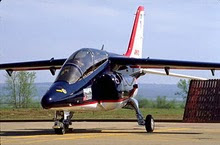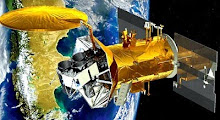 Early life
Early life
 Tank was born in Bromberg (Bydgoszcz), Province of Posen. His grandfather was a cavalry sergeant in the Uhlans and his father, Willi Tank, was a grenadier sergeant in the 3rd Division. When World War I broke out Tank wished to join the Imperial German Army Air Service, but his father insisted he instead follow the family tradition and enlist in the cavalry. He ended the war as a captain, with many decorations for bravery.
Tank was born in Bromberg (Bydgoszcz), Province of Posen. His grandfather was a cavalry sergeant in the Uhlans and his father, Willi Tank, was a grenadier sergeant in the 3rd Division. When World War I broke out Tank wished to join the Imperial German Army Air Service, but his father insisted he instead follow the family tradition and enlist in the cavalry. He ended the war as a captain, with many decorations for bravery.
Career
After the war, Tank graduated from the Technical University of Berlin in 1923. A mentor from the university secured him his first job, in the design department of Rohrbach Metallflugzeug GmbH, where he worked on flying boats and assisted in the design of the passenger aircraft, the Ro VIII Roland. Tank moved on to Albatros Flugzeugwerke, where he worked as a test pilot. The Albatros company went bankrupt in 1929 and in 1931, under government pressure, was merged with Focke-Wulf.
 Fw 44 Stiegltz - Museo Aeronáutico de Morón - Argentina
Fw 44 Stiegltz - Museo Aeronáutico de Morón - Argentina
Tank then started work on the design of the Fw 44 Stieglitz (Goldfinch), a two-seat civilian biplane. It was Focke Wulf's first commercially successful design, launched in 1934. This led to burgeoning growth for the company as Hitler began to prepare the country for war.
 Fw 200 Condor
Fw 200 Condor
In 1936 Tank designed the Focke-Wulf Fw 200 Condor to a Lufthansa specification. The first flight was in July 1937 after just under one year of development with Tank at the controls.
World War II
The Fw 190 Würger (shrike), first flying in 1939 and produced from 1941 to 1945, was a mainstay Luftwaffe single-seat fighter-bomber during World War II, and Tank's most prolific (over 20,000 produced) and famous design. In January 1943, he was named honorary Professor with a chair at the Technical University of Braunschweig, in recognition of his services to the development of flight.
 Ta 152
Ta 152
In 1944, the Reichsluftfahrtministerium (German Air Ministry) decided that new fighter aircraft designations must include the chief designer's name. Kurt Tank's new designs were therefore given the prefix Ta. His most notable late-war design was the Ta 152, a continuation of the Fw 190 design.
Post war
After the war Tank negotiated with the United Kingdom, the Nationalist government of China, and representatives of the Soviet Union and when the negotiations proved unsuccessful, accepted an offer from Argentina to work at its aerotechnical institute, the Instituto Aerotécnico in Córdoba under the name of (Prof. Dr.) Pedro Matthies. It is recorded that the British government decided not to offer him a contract on the grounds that he was too important, and they could not see how he could be integrated into an existing research project or design group.
 IA-35 Huanquero - Bombardero Argentino
IA-35 Huanquero - Bombardero Argentino
He moved to Córdoba, with many of his Focke-Wulf co-workers, in 1947. One of these was Ronald Richter who intended to power airplanes with nuclear fission power, to be developed in the Huemul Project.
The Instituto Aerotécnico later became Argentina's military aeroplane factory, the Fábrica Militar de Aviones. There, he designed the IAe Pulqui II based on the Focke-Wulf Ta 183 design that had reached mock-up stage by the end of the war. It was a state-of-the-art design for its day, but the project was axed in 1953 due to Argentina's financial crisis.
When President Juan D. Perón fell from power in 1955 the ex Focke-Wulf team dispersed, many to the United States.
 Kurt Tank y Pte. Juan Domingo Perón
Kurt Tank y Pte. Juan Domingo Perón
Tank instead moved to India. First he worked as Director of the Madras Institute of Technology, where one of his students was Abdul Kalam (later Kalam became President of India and designed indigenous satellite launch vehicles and missiles).
 Kurt Tank later joined Hindustan Aeronautics, where he designed the Hindustan Marut fighter-bomber, the first military aircraft constructed in India. The first prototype flew in 1961; the Marut was retired from active service in 1985.
Kurt Tank later joined Hindustan Aeronautics, where he designed the Hindustan Marut fighter-bomber, the first military aircraft constructed in India. The first prototype flew in 1961; the Marut was retired from active service in 1985.Fuente: Wikipedia

.svg.jpg)
.svg.png)




.svg.png)






























4 comentarios:
Groso entre los grosos, uno de sus últimos desarrollos que voló en la IIGM, el Ta 152, fue tan buen avión, que incluso pilotos del Me 262 a reacción al volarlo lo encontraban superior, y eso que contaba con un motor radial a pistón.
Muy buen informe y las fotos son espetaculares!!!!
Muy buena la biografía
Analysts Predict: Your Financial Savings Will Be Gone In 12 Months
BREAKING NEWS: Analyst predicts the fall of the US Dollar within 12 months
Let’s face it.
The US is no longer the power house and it once was.
We already have more problems than we can handle across the border.
Not to mention the unemployment rates rising.
Now all these things are NOTHING to what’s going to come next.
You see the US Dollar itself is going to collapse.
>>[Watch This Video To Learn More]<<
The downtrend has been clear since 1973.
Now we’re on the verge of total financial meltdown.
And the worst thing is…
We cannot stop or avoid it this time.
>>[Watch This Video To Learn More]<<
Make sure you watch that video before it’s taken down by the government.
This is serious stuff and you need to share it with your friends and family if you truly care about their safety.
Speak soon.
[Mr Mark Fidelman]
Publicar un comentario